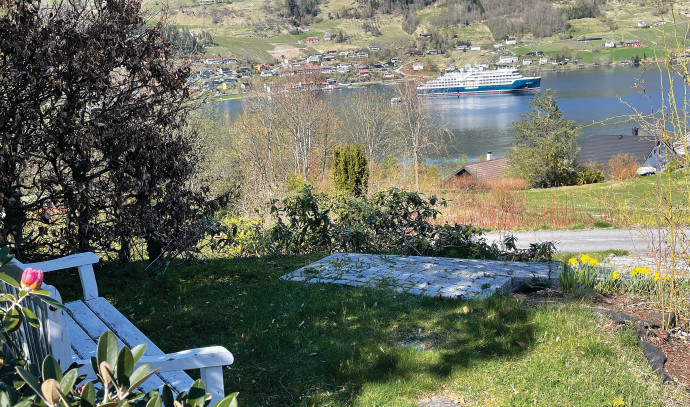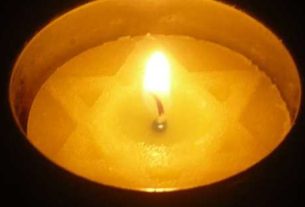Some cruise ships are floating resorts, with more than 9,000 passengers and crew, dozens of restaurants and bars, shopping malls, theaters, casinos, nightclubs, water slides, roller coasters, virtual reality arcades, climbing walls and go-karts. Going somewhere is almost beside the point.
Then there are ships like the new Swan Hellenic Diana.
The Diana, launched in May, accommodates only 192 guests, served by a crew of 140. It’s an expedition ship, built to go into smaller ports the giant ships can’t reach – including destinations in the Arctic and Antarctic. The Polar Class 6 ice-strengthened hull lets it crunch through 70 to 120 cm. of ice, and its Zodiac inflatable boats ferry passengers to rugged shores where they can see wildlife up close.
The Diana is styled like a casually luxurious Scandinavian boutique hotel. Amenities include an infinity pool, a sauna and steam room, a Jacuzzi, an exercise room, a beauty salon and barber shop and a small spa.
The library is stocked with art supplies and books about the ship’s destinations; the observation lounge, where a pianist entertains in the evenings, has board games, backgammon and jigsaw puzzles. There’s even a science lab.
Swan Hellenic has partnered with the SETI Institute, a space and Earth science research organization, which provides guest speakers on some voyages. Other voyages include speakers on subjects ranging from arctic exploration to Viking raids to World War II commando operations.
Guests can watch the passing scenery from their own private balconies or from the comfort of the sofas in their cabins. The ship has heated outdoor window seats where a passenger can curl up under a blanket with a mug of hot chocolate or an Irish coffee.
Cabins aboard are spacious
Cabins aboard the Diana are spacious and smell delightful, thanks to cedar-lined closets and sprigs of fresh eucalyptus. A typical cabin is 28 sq.m. with a 6 sq.m. balcony. Larger suites are up to 47 sq.m., and some cabins have faux fireplaces.
Swan Hellenic has teamed with JRE-Jeunes Restaurateurs, a group of 375 restaurants and celebrated young chefs, to design special menus. Breakfast, lunch and tea are served buffet-style, while guests are served at their tables for dinner.
Room service is available 24 hours a day, at no extra charge, as are tea, coffee, soft drinks and most alcoholic drinks. Cabins have espresso makers and hot water kettles, and the mini fridges are kept stocked with sparkling wine, beer and soft drinks (also at no extra charge).
The food on board the Diana isn’t under rabbinical supervision, but vegetarian options are offered at all meals. On its maiden voyage, the ship accommodated a passenger who requested kosher meals by stocking up on kosher meat (including filet mignon). Food for the passenger was cooked in separate meat and dairy pans and served on new plates with new cutlery, which were washed separately. The chef even made challah for the passenger – every day – and cholent for Shabbat.
After a naming ceremony in Amsterdam, the Diana headed up the coast of Norway. The first port of call was Mandal, a town of 11,000. The quaint main street is lined with bakeries (one dating from 1905 offers cream-filled fluffy cinnamon rolls called Kaneldrøm) and shops selling hand-made sweaters, wool blankets and all things hygge (Norwegian for cozy).
Continuing north, the Diana slipped into fjords lined with small towns and remote farmhouses, snow-topped mountains looming above.
At each stop, passengers were offered a range of activities, such as a leisurely bus ride to a scenic viewpoint 1,500 meters above the fjord, a bike-and-hike to a waterfall, kayaking, a visit to an herb farm and a walk with llamas.
Thrill-seeking guests were invited to take a dip in an icy fjord – safely tethered to the ship.
During surprisingly interesting and non-stinky visits to fish-farming and processing centers, passengers learned how salmon went from flapping to Costco in 48 hours.
On barren, windswept Frøya Island, passengers toured a World War II German coastal fortress, with a tiny museum in an old bunker and hundreds of meters of dank, eerie tunnels.
The cruise ended above the Arctic Circle in the city of Tromsø, with the world’s northernmost university – and the northernmost Holocaust memorial.
Before World War II, Tromsø had a small Jewish community but no synagogue of its own. Boys traveled hundreds of kilometers south to Trondheim for their bar mitzvahs. When the Germans invaded Norway in 1940, some of the city’s Jews escaped with the help of their neighbors. Others were rounded up by the Nazis.
A memorial in a corner of a park near the port commemorates the 17 Jews of Tromsø who were murdered. A blue plaque outside the Anne-Lise Caplan lingerie store recognizes David Caplan, born in the UK, who became a Norwegian citizen and died in Auschwitz.
Brass “stumbling stones” set into the sidewalk outside a souvenir shop on the main square list the names of murdered Jews from the Shotland family who once worked at the site.
The charmingly old-fashioned Lofoten War Memorial Museum in Tromsø has a small section on Holocaust victims and an extensive exhibition of uniforms and artifacts from World War II.
The Diana will spend the summer in the Arctic and visiting the Norwegian fjords before traversing the Atlantic coast of Europe from Amsterdam to Lisbon. It will proceed to the coast of North Africa, stopping in Morocco, Algeria and Tunisia.
After touring the Mediterranean, the Diana will pass through the Suez Canal in October (with excursions to Mount Sinai and Petra), on its way to the Indian Ocean, Madagascar and the east coast of Africa. Then it’s on to Antarctica in November for the Southern Hemisphere’s summer season.
The writer was a guest of Swan Hellenic.



